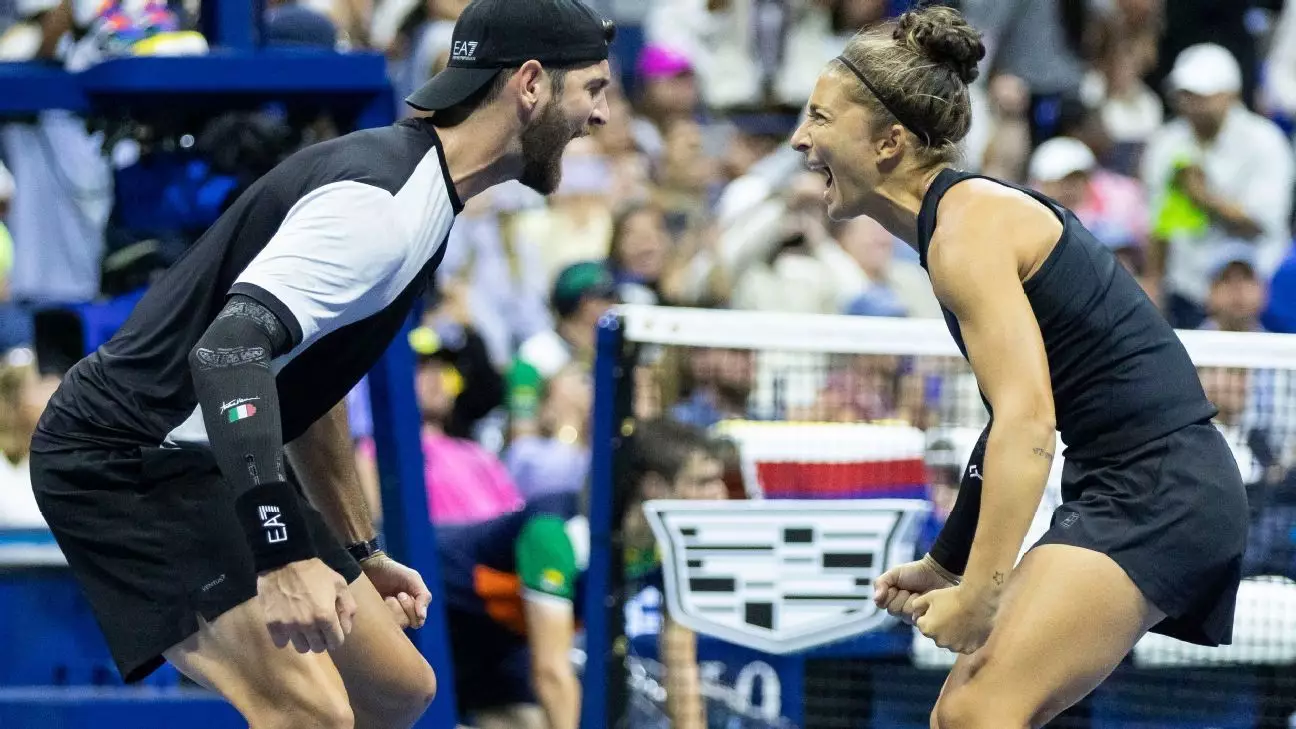In recent years, professional tennis has increasingly become a battleground dominated by singles superstars, often at the expense of doubles specialists. The US Open’s recent overhaul highlights this shift, aiming to attract top-tier singles players by restructuring the tournament’s schedule and format. While this approach seeks to elevate the event’s prestige and viewership, it inadvertently sidelined the very players who have historically kept doubles alive—those dedicated to the craft of teamwork and strategy. Yet, amidst skepticism and heated debates, the victory of Sara Errani and Andrea Vavassori signals that doubles tennis, when played with ingenuity and passion, remains a potent force capable of capturing the audience’s imagination.
Errani and Vavassori’s triumph is more than just a statistical achievement; it’s a bold statement that doubles matches offer excitement, unpredictability, and a showcase of tactical mastery. Their journey to reclaim the title they last held in 2018-19 defied the odds, challenging the notion that star power from singles is the only recipe for a successful event. Their win not only disrupts the narrative that doubles is secondary to singles but also reaffirms that well-executed doubles play can command the same attention and admiration as singles matches. It’s a reminder that skill, chemistry, and strategic thinking are invaluable and can shine brightly regardless of the format or the marquee names involved.
Transforming the Audience Experience: A Personal and Cultural Shift
The redesigned US Open mixed doubles event introduced a radical format—shortened sets, a condensed schedule, and a tournament positioned before the main singles draw. Critics initially dismissed these changes as mere spectacle, fearing they watered down the sport’s integrity or turned it into a glorified exhibition. However, what transpired was a demonstration of the event’s transformative power. With a packed Arthur Ashe Stadium and an electric atmosphere, the audience was immersed in every rally, rallying behind underdog stories and thrilling comebacks.
This new format fosters a unique environment, emphasizing excitement over tradition. For spectators, this creates a more accessible and engaging experience—no longer sidelined by lengthy matches, they can witness high-stakes moments in real-time, infused with unpredictability. Errani and Vavassori’s resilience and quick adaptation exemplify this new era: they built momentum, stayed composed under pressure, and celebrated their victory in front of thousands. Their win challenges the idea that only the biggest stars can draw crowds; instead, it celebrates the crowd’s appetite for intensity, skill, and genuine competition.
The Impact on Doubles Players and Future Prospects
While some doubles players criticize the tournament’s revision as a departure from tradition, the event’s success suggests a potential paradigm shift. Doubles specialists have long struggled for recognition and opportunities on the big stage, often overshadowed by singles giants. Errani, a celebrated doubles legend with a career Grand Slam, and Vavassori, a rising star, symbolized perseverance and strategic brilliance—qualities that remain vital regardless of format changes.
Their victory opens doors for future tournaments to reconsider how doubles is integrated into the broader tennis calendar. If the audience continues to respond positively, organizers might be encouraged to develop formats that balance tradition with innovation, fostering a healthy ecosystem for doubles players. Moreover, their win serves as a compelling argument that doubles tennis can adapt and thrive, provided there is creative experimentation and respect for the game’s tactical depth. The tournament’s gamble on a new approach may have paid off—ushering in a future where doubles is not a mere afterthought but a core component of major tennis events.
A Personal Perspective: Reshaping the Narrative of Tennis Excellence
From an analytical perspective, Errani and Vavassori’s victory exemplifies how adaptability and strategic acumen often outweigh raw star power. Their success underscores the importance of understanding the nuances of doubles tennis—placement, teamwork, court awareness—and leveraging these skills against formidable opponents like Swiatek and Ruud. Their win, achieved through quick thinking and timing, challenges the prevailing perception that only the biggest names can clinch titles at grand slams.
Furthermore, their partnership represents a broader ideal—that tennis, at its core, remains a sport of mastery and resilience. It is about seizing opportunities, embracing innovation, and pushing past barriers—whether it’s format changes or skepticism from critics. The fact that Errani and Vavassori took the court amidst controversy and delivered a performance that resonated with fans demonstrates that authenticity and passion can elevate the game, even under unfamiliar circumstances.
While some may argue these changes diminish the sport’s prestige, the real lesson is that tennis’s true strength lies in its versatility—the capacity to evolve without losing its essence. As the courts echo with cheers for doubles heroes, the message becomes clear: at the heart of tennis is a game where strategy trumps stardom, and perseverance can transform the game’s narrative. The US Open’s bold experiment has, whether intentionally or not, rekindled the spirit of doubles—a testament to the sport’s enduring appeal and transformative power.


Leave a Reply